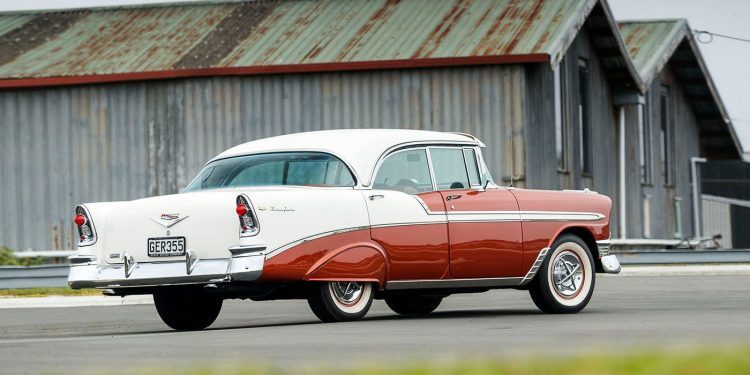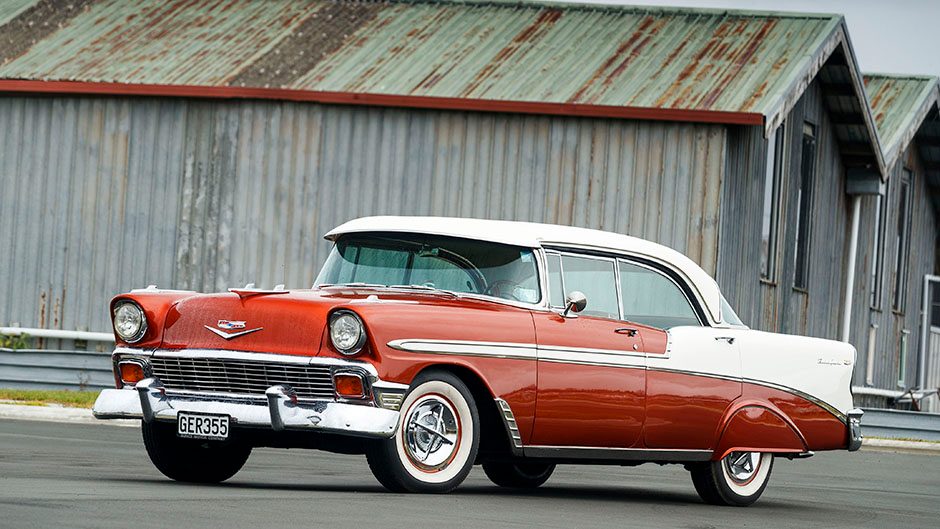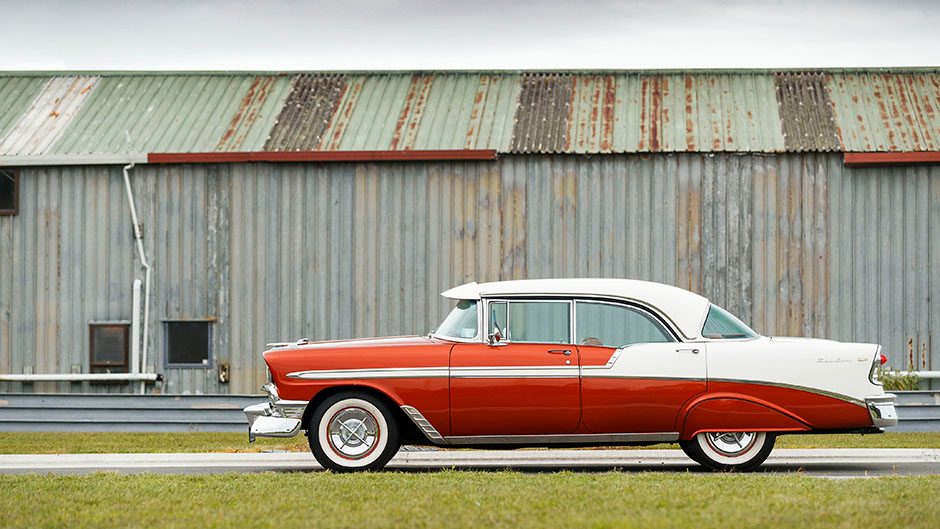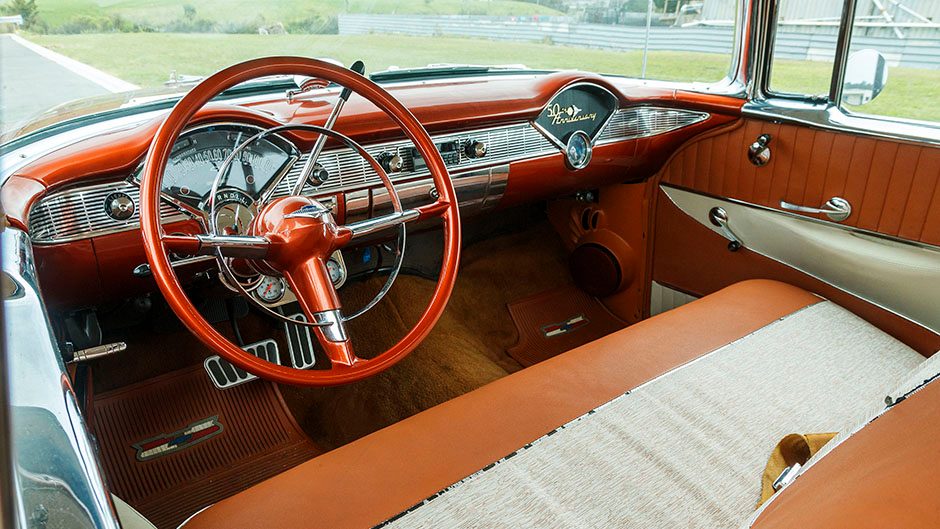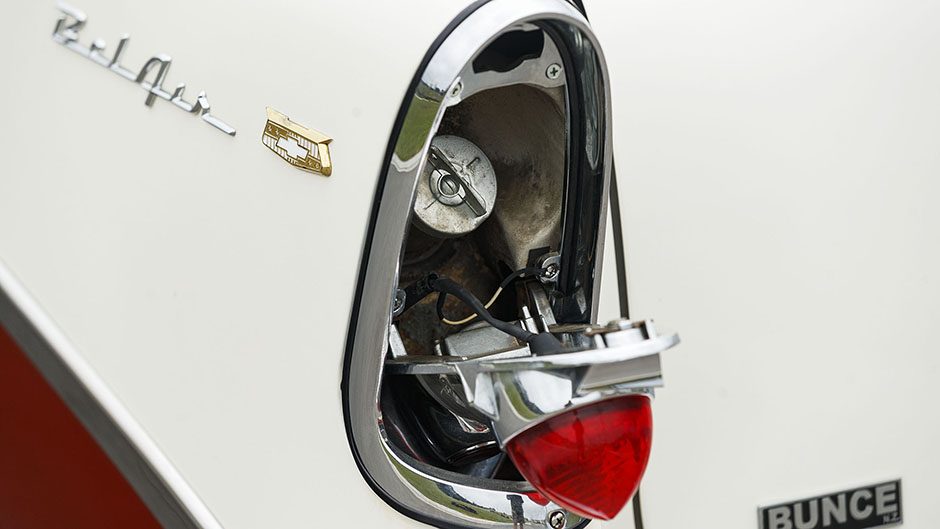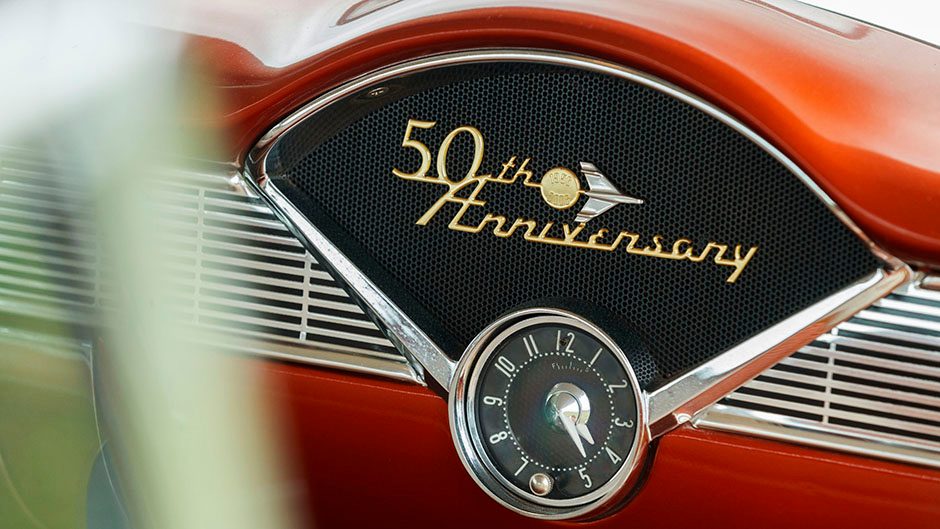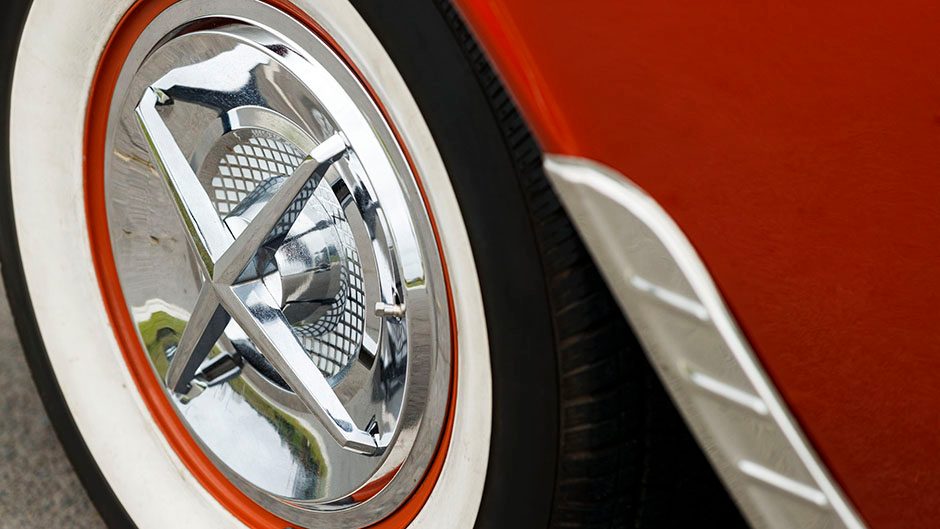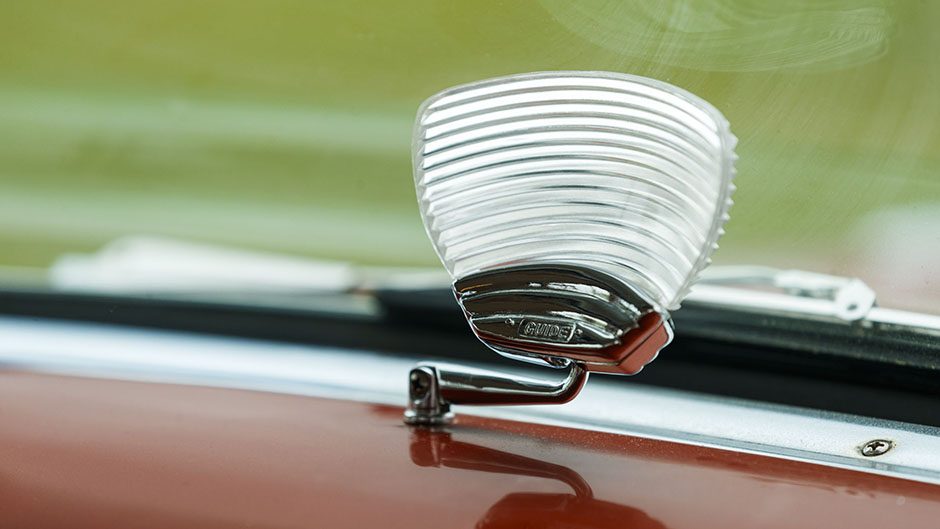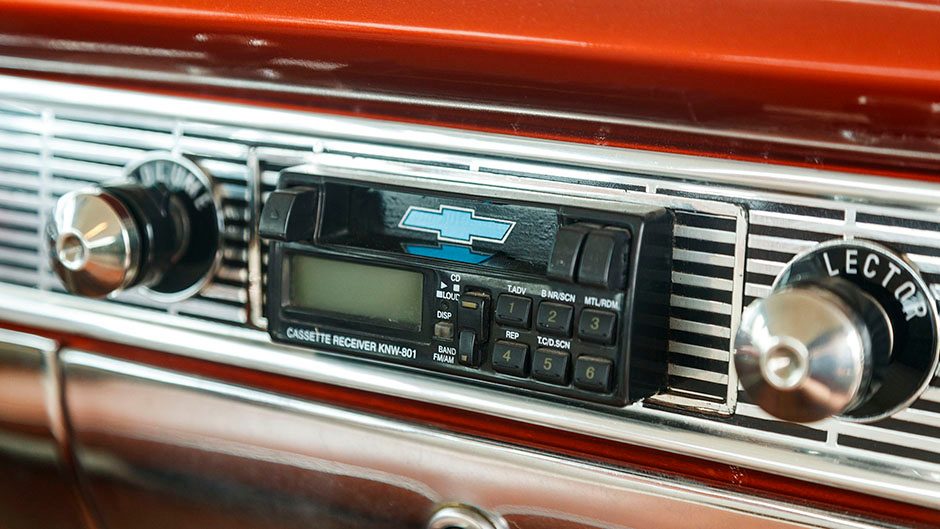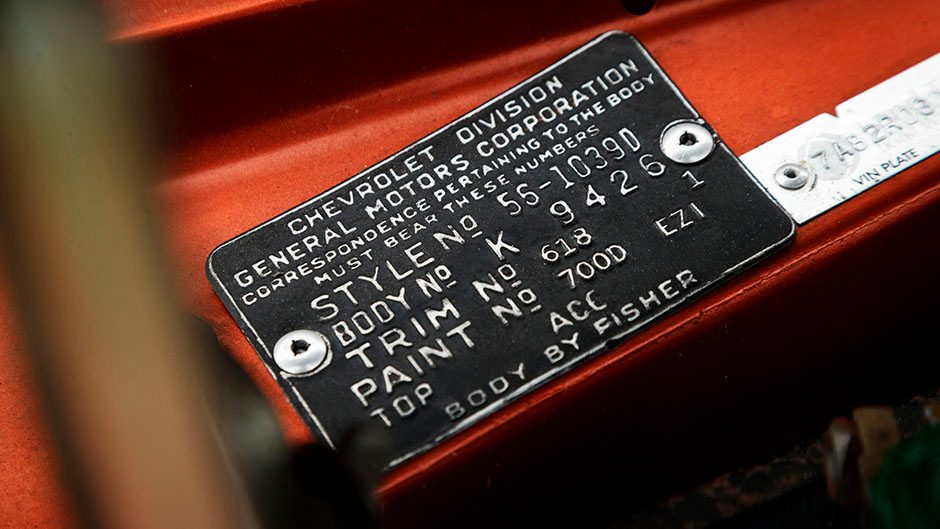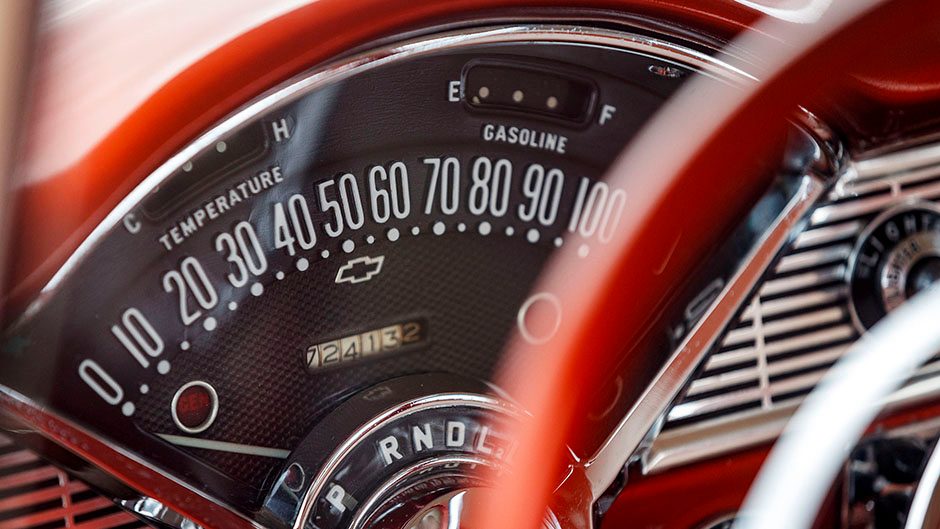1956 Chevrolet Bel Air
Words Kyle Cassidy | Photos Tom Gasnier
Chevrolet introduced a sport sedan to its line-up in 1956, a shape the owner of this example reckons to be the best of the bunch. We take a cruise in this great looking 64-year-old.
New Zealand and the US of A were worlds apart in 1956. Elvis was storming up the charts in America, Norma Jean changed her name, the USAF’s new U2 spy plane made its first flight, an American had hit Mach3 for the first time in the Bell X2 and IBM created the first hard disk drive. Meanwhile in Aotearoa, the big news was that Opo, the gay dolphin, had been found dead in Opononi. Our cricket team won its first-ever test, after 26 years of trying, and the All Blacks finally beat the Boks in a series.
One of the few similarities between the two great nations was that you could buy one of GM’s new Bel Air models. The big Yank was assembled here in Wellington, but the only model available was a four-door, seven-window sedan. A three-speed manual was the sole transmission and the Kiwi Bel Air did without the powered bits the Americans enjoyed, like assisted steering and brakes. And forget about the optional extras such as heaters or A/C.
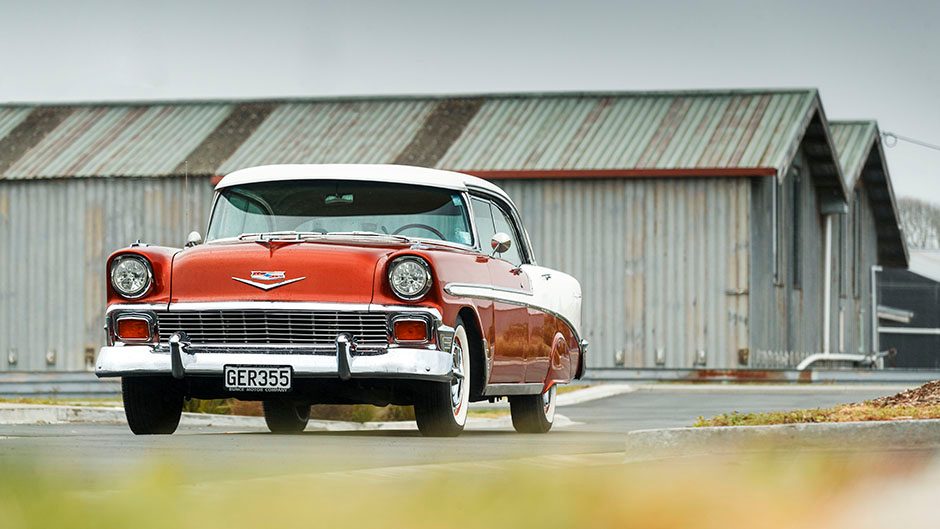
In the US, GM marketed its ’56 model in the fleet-spec One Fifty, the mid-range Two Ten and the top Bel Air. With a range of body styles including four- and two-door sedans, pillarless models, coupes, convertibles and station wagons, GM offered 20 different variants, all spun off the one chassis. It included oddballs like the utility sedan, a two door with a bench seat up front and an enlarged cargo area in the rear, perfect for the travelling salesman.
New to the line-up in ’56 was what GM called a Sport Sedan, a six-passenger, five-window, four-door, distinguished by its pillarless hardtop design. All the ’56 models sat on a full-frame chassis with GM’s short- and long-arm wishbone type suspension on the front and a semi-elliptical leaf spring rear. The standard engine was the 235 cube straight six with 125hp and 265Nm of torque at 2000rpm. Some models allowed for the optional 265CI V8, power ranging from 137 to 170hp. With the cost-extra four-barrel carb, torque rose to 340Nm at 2800rpm. Buyers got the choice of a three-speed manual with an optional overdrive or the two-speed ‘Powerglide’ auto.
Chevrolet first used the Bel Air nameplate in 1950, sticking it on a new hardtop model that, somewhat oddly, was styled to look like a convertible, though the steel roof was fixed. In ’53 the Bel Air badge then applied to the range-topping variant of the full-size line-up.
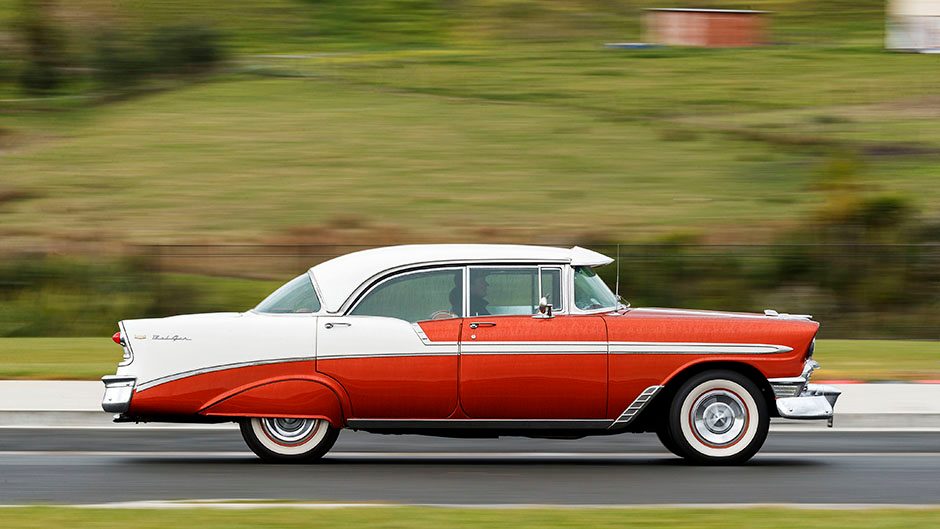
The second generation cars spanned the glory years of the Bel Air, 1955 to 1957. With the yearly updates that were the norm in those days, the 1956 model gained a more traditional full-width grille up front and two-tone styling for rear flanks.
As mentioned, the 1956 Sport Sedan, which is what we have here, was new to the Bel Air line. With a coupe-like roofline, it channels a chopped vibe, the window line plunging into the abbreviated C pillar. The ’56 does without the more flamboyant fins of the ’57, while the chrome work you could call tastefully restrained for the period.
However, the ornamentation never fails to amuse; such embellishments wouldn’t fly today on cost alone, never mind pedestrian safety. We imagine the hood bird, part eagle, part delta-wing bomber, would have impaled a few jaywalkers over the years.
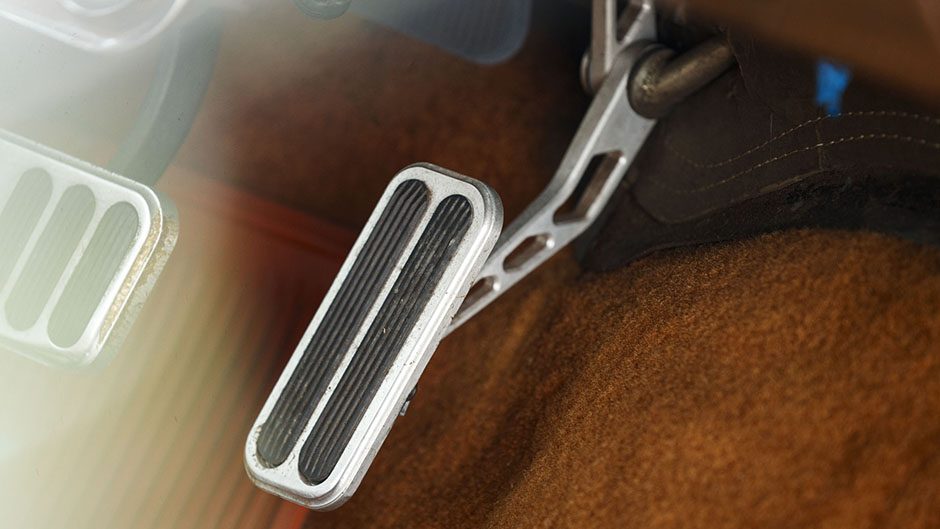
This Sport Sedan is owned by life-long Chev man, George Bunce. His first car was a ’39 Chevrolet Coupe, bought for the princely sum of £300. He’s always admired American cars as he liked to have a bit of grunt while the Pommie motors had none, he reckons. He owned a gas station in Albany, north of Auckland and he said the hill leading out of town on the old SH1 used to be a real stumbling block for some of the underwhelming British stuff (he used a different descriptor); ‘They’d boil themselves trying to get to the top’.
He’s had a few Chevrolets over the years while this ‘56 Sport Sedan was purchased around 15 years ago. He bought it from the US, an online purchase, something that he says is never without pitfalls. Offered for sale by someone calling himself ‘Dan Dan the real estate man’, George said he should have known better. The Sport Sedan looked sound from the photos and videos, but George really wanted a car with air conditioning. Dan Dan insisted he had an A/C unit for the car that he’d put in the trunk prior to shipping. Of course, the ’56 turned up with nothing in the boot, just a cordless drill someone had misplaced. And then the real estate mogul was suddenly difficult to get hold of. George was also assured the car was completely rust-free, which Dan’s honest testimony swore to. While it was pretty good in this regard, he did discover a rust hole well disguised in the floor. George ended up replacing the entire floor to ensure it was done right, but it’s another lesson of buyer beware when sourcing a car online. George’s son would eventually call on honest Dan during a trip to the States to try and track down that elusive A/C unit ,only for the crooked seller to finally confess there never was one. Though he did enquire about getting his drill back…
Otherwise George was happy with the car as, to his mind, the pillarless four-door is the best looking of the lot. It had its original 265 V8 replaced by the ubiquitous 350 small block at some stage in the US, mated to a three-speed auto. Ever-honest Dan had told him they’d fitted a stronger diff in the rear, though George says upon closer inspection, they hadn’t.
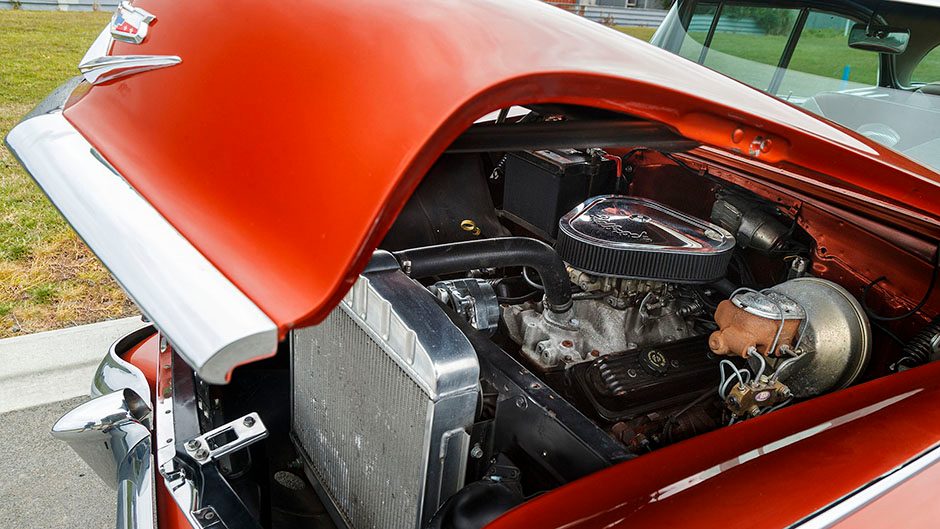
While not an absolute minter, it’s in a sound condition. The ’56 has some neat details, like its hidden gas flap. Any ideas where it might be? It’s cunningly concealed behind the left-hand taillight. You’d literally never find it if you were unaware.
There’s plenty of chrome in the cabin – it’d be blindingly bright in summer – while other bits seem ready to scald bare skin after being superheated in the sun. We wouldn’t want to be putting our arm on those chromed door tops, for instance. There are a few aftermarket items in the cabin but it’s all in keeping with the 50’s theme. And the tape deck could be considered classic now anyhow.
Keyless ignition is a feature, just twist the key slot and you’re away. Those were the days. A little glass contraption on the dash had us flummoxed. This traffic light viewer uses the prism principal to reflect the image of overhead traffic lights, the type strung up above an intersection in the US. It meant drivers didn’t have to gaze skyward to see when the signal turned green, especially useful on a car like this, with its visor in place.
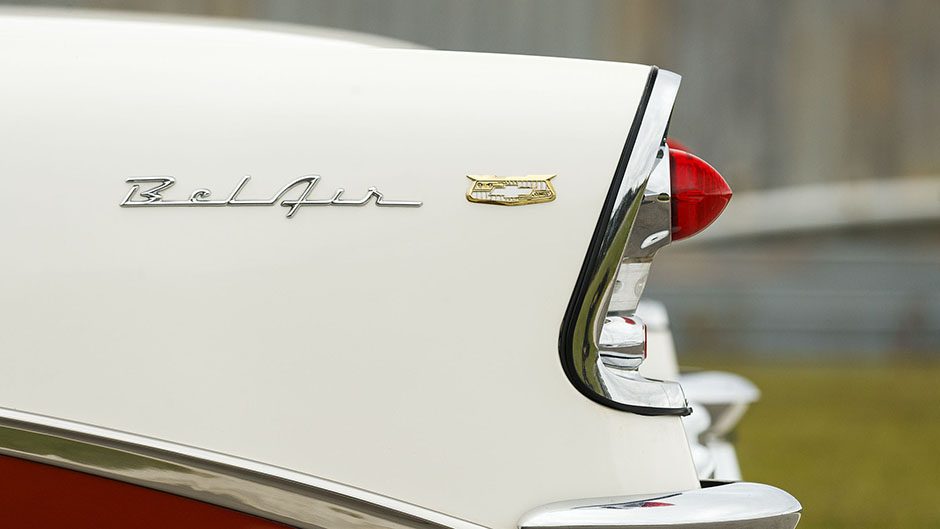
This Sport Sedan is a comfort cruiser, the seats well stuffed, the width of the bench seat generous. Despite its size, the rear leg room is tight, designers of the era keen to keep with the mantra of equal proportions; a third for the hoodline, a third for the trunk and the rest left over for the cabin.
A few ‘modern’ mechanical items ensure more reliable running, like an electric fuel pump, electronic ignition and improved cooling, with a large-capacity alloy radiator. It has disc brakes up front too. The recirculating ball-type steering is lightweight, naturally, but not overly slow on the turn. And the freeplay is minimal. This ’56 tracks sweetly, as long straights are what it was designed for, and it rides commendably well, the bumps soaked without rattling the cabin. It’s no precision cornering tool, but it does haul up rather well. The V8 is smooth in its delivery of easy torque. It’s hushed when cruising, but has a nice burble when given the boot. The auto is fairly cultured too, just the odd shock when changing down.
George admits that his Sport Sedan doesn’t get a lot of use these days, but his grandson, one of the few approved to drive it, always has a massive smile on his face when he takes it out.


